
I love when I find these games that mix weird mechanics because they almost always end up being fun and original. In this case I discovered Drop Duchy, a roguelite with tetris mechanics, yes, tetris.
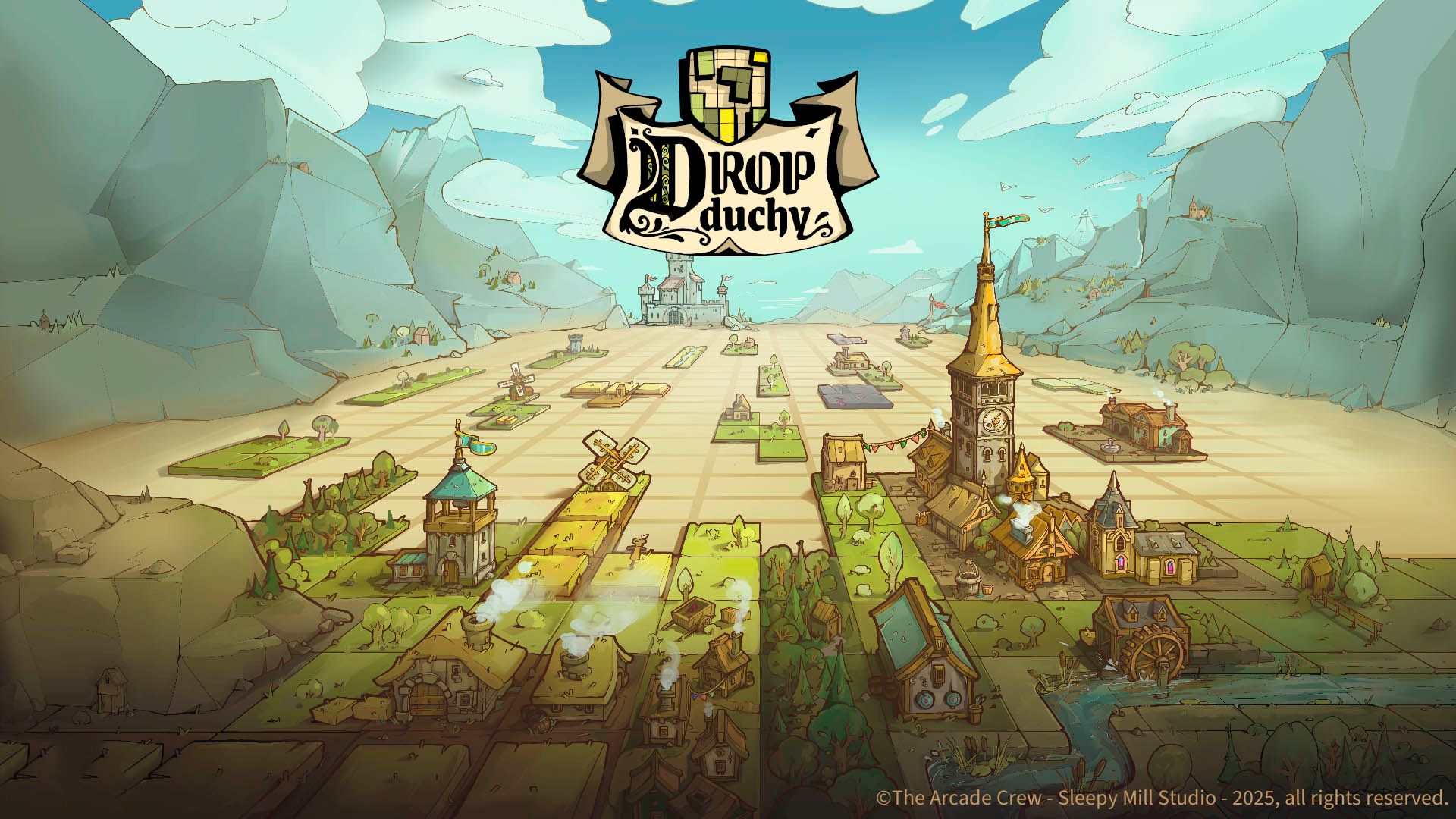
So, we don't have a story, which I appreciate because it wouldn't add anything to a game like this. The mechanics of the game is that when we start a level, we will see a board and pieces will begin to fall, literally like the tetris we all know. The difference here is that each of these pieces will represent a terrain, in this case as I'm starting I only have pieces of forest and savannahs. Whenever we complete a line, we will get a certain amount of resources, which we can use later.
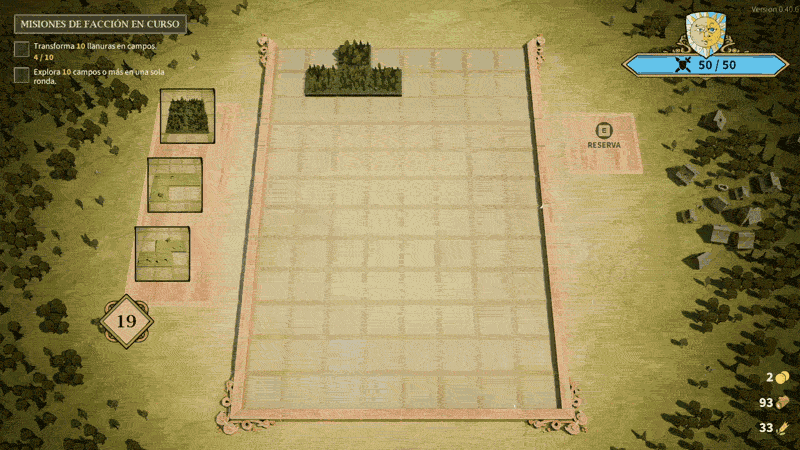
In addition to the terrain pieces, there will also be pieces that are structures, such as a farm. These pieces will interact with the terrain in different ways, for example, there are pieces that will turn nearby forests into wheat fields and give us materials, so if we want to get the best profits, we must think when playing and avoid placing pieces randomly.
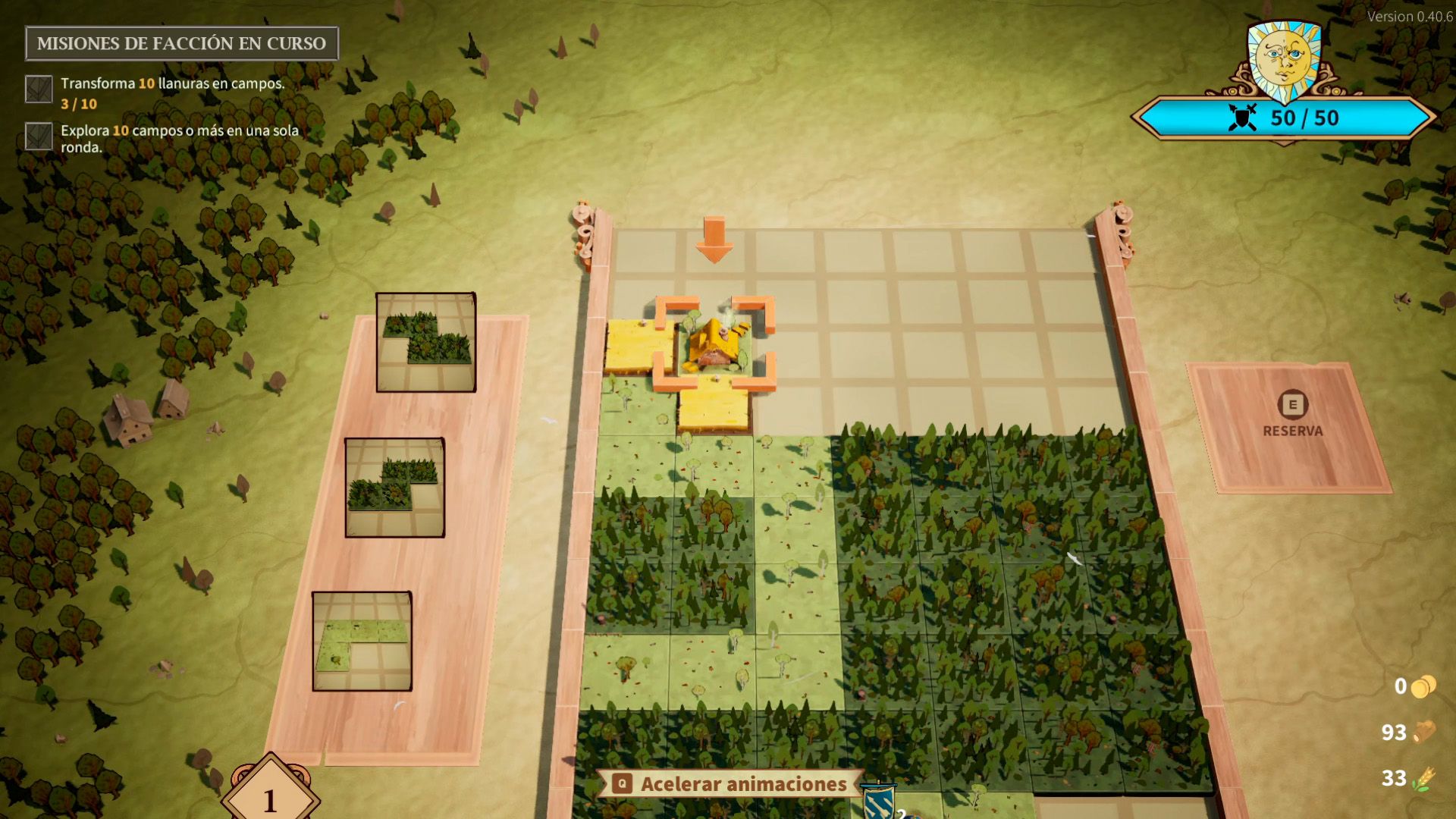
The first level will always be peaceful and will be focused on helping us collect materials. Once we fill the board vertically, the level will end and we will move on to the next area. On the map many times the paths will fork and we will be able to decide where to go. We will have peaceful areas, vendor areas where we can spend our resources and enemy areas.
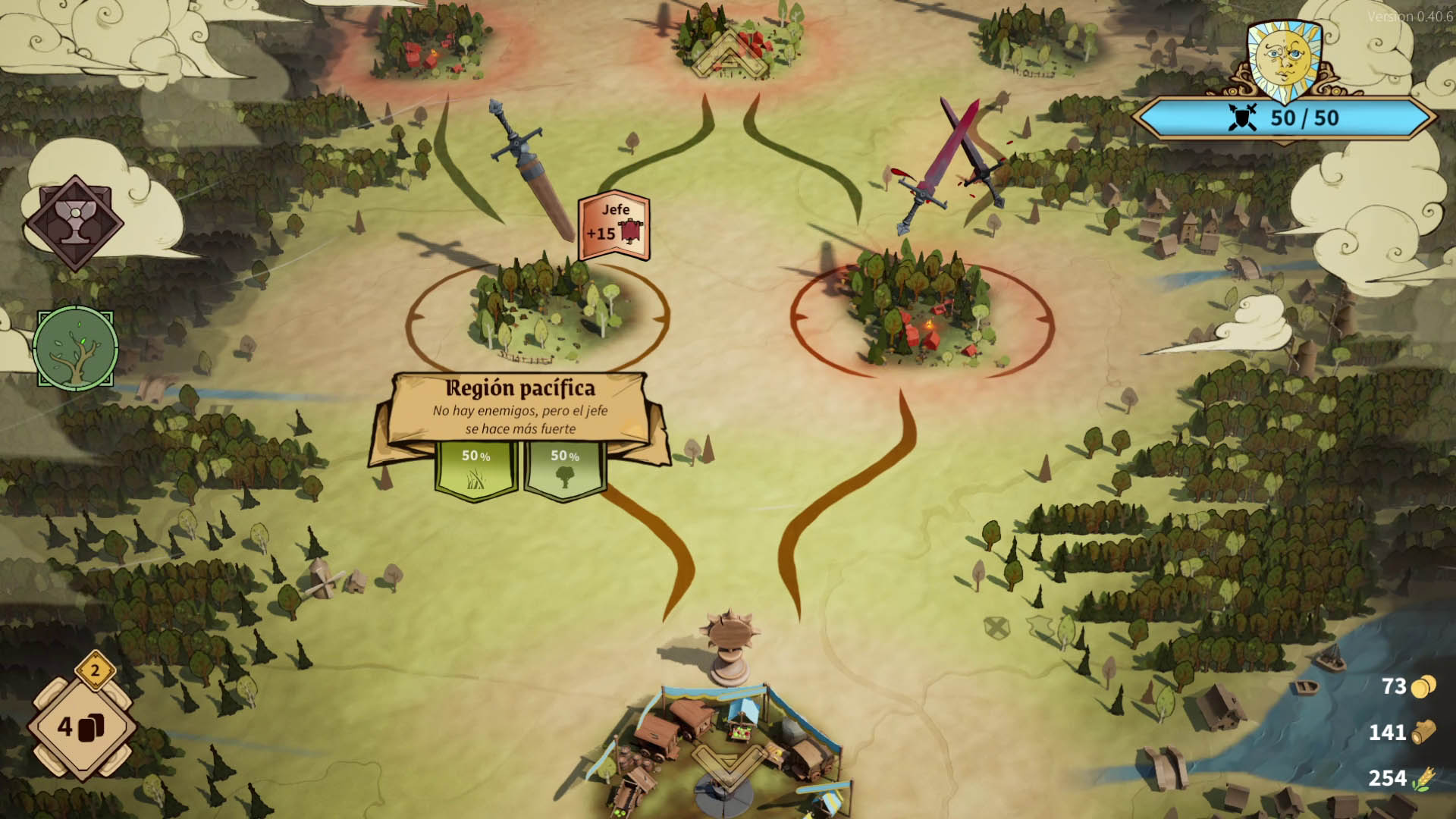
When we enter an enemy zone the mechanics will be the same, but, in addition to our pieces, pieces of enemy structures will also fall, something like enemy barracks. Just like ours, these pieces will have effects, for example; There will be an enemy piece that for each savannah it has nearby, will gain 1 soldier. Luckily we will always have control of the board, so, if we are smart, we will avoid placing enemy pieces in advantageous places.

As for our counters, we will not only have farms, we will also have offensive structures that, depending on where they are, will gain more or less military power. At the moment there will only be three types of military power; Swords, Axes and Arrows, each one is strong and weak against the other.
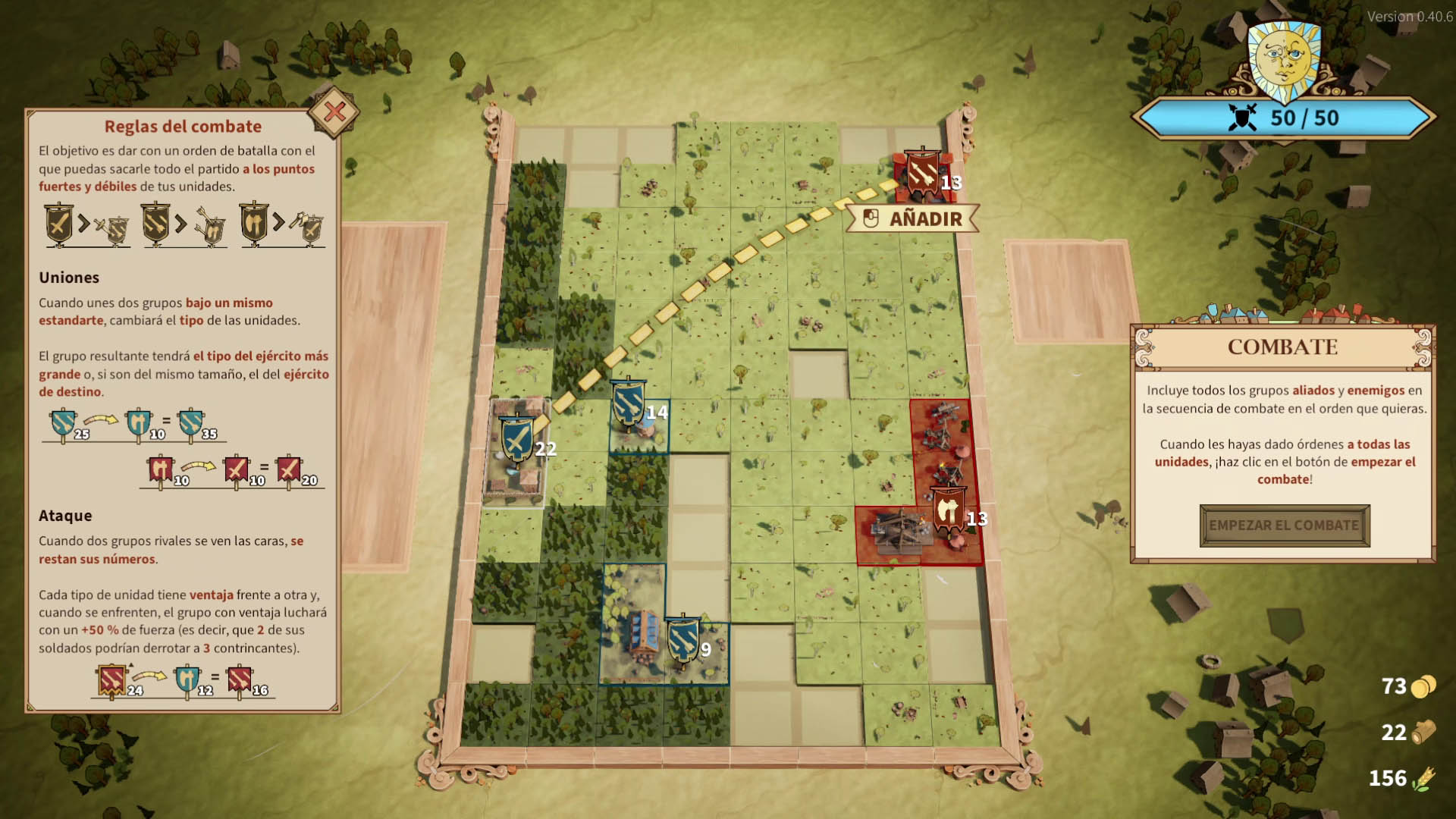
Once we fill the board vertically, the attack phase begins. This is probably the most complex to explain. The power will be represented by the number of units we have. The result will be a subtraction of the number of enemies to our number of soldiers, for example, if we have 40 axe soldiers and we attack 20 enemy axe soldiers, the result will be that we will be victorious with 20 axe soldiers. However, if with the axe soldiers we attack the sword soldiers, we will have an advantage, so we could lose less soldiers in the final result. It sounds confusing, but after 2 or 3 fights you adapt. In case our amount of soldiers is less than the amount of enemy soldiers, besides losing our units, we will lose life points. We will have 50 in total, at least at the beginning. The amount of points lost will depend on how much difference there is in the combats, the good thing is that unless we lose them all, we will be able to continue advancing.

Something I haven't said is that the game works as a deckbuilder, each piece of structure will be a card that we can add or remove from our deck. These cards can also be leveled up by spending resources such as wheat or wood, which we will obtain along the map and in the peaceful levels. By leveling them up they will gain advantages such as increasing the amount of soldiers created.
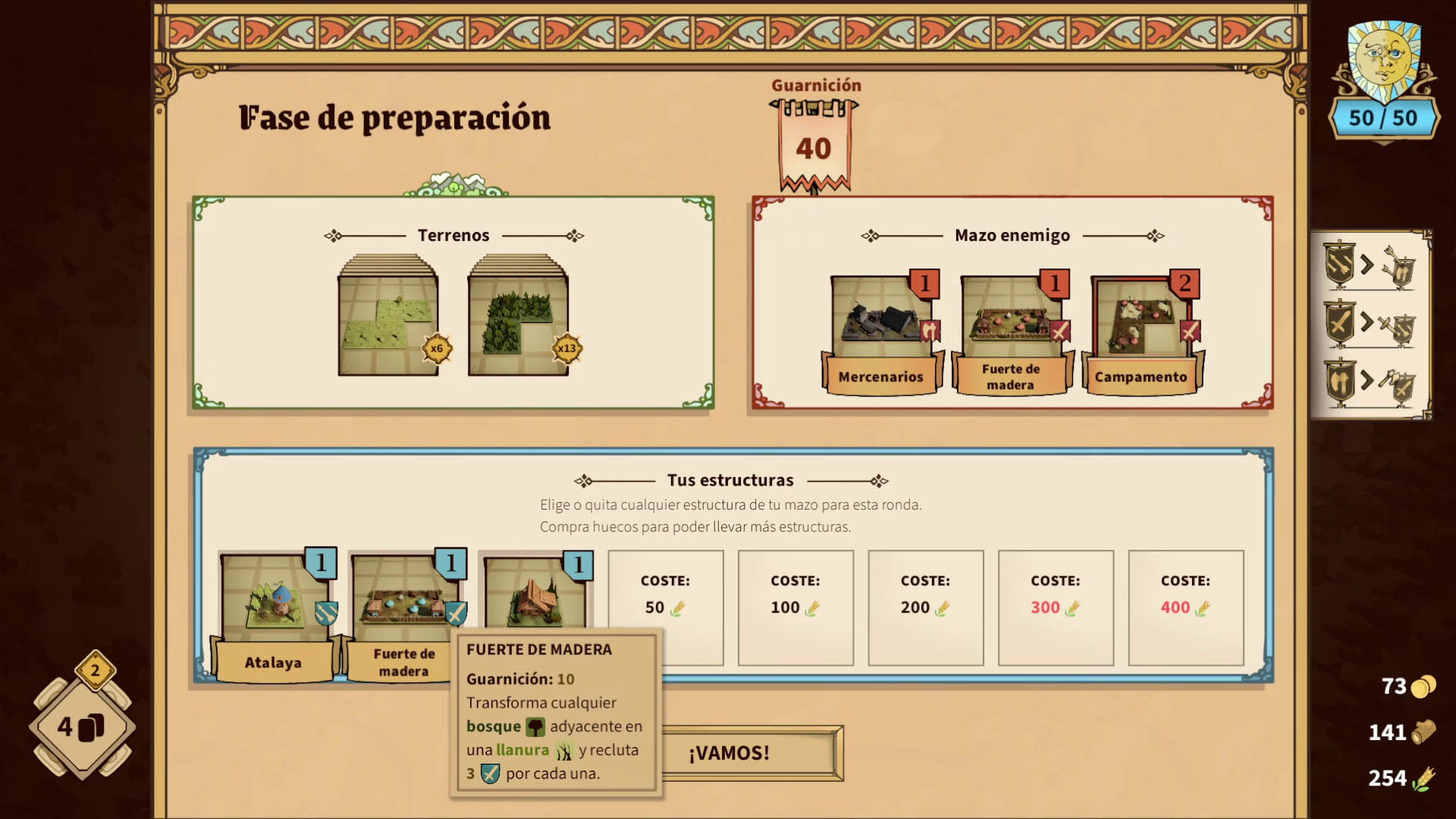
If I'm not mistaken, the game currently has 3 acts. I was able to complete the first one, but I died in the second one. At the end of the first act we will face a boss, which will have a quite original mechanic. The board will have a big wall in the middle and, if a piece ends up on that wall, the phase will end immediately and we will start fighting. So, to make sure we can place as many pieces as possible and increase our troops, we will have to play smart. The better we play, the higher the wall will go up and the more space we will gain to place more pieces.
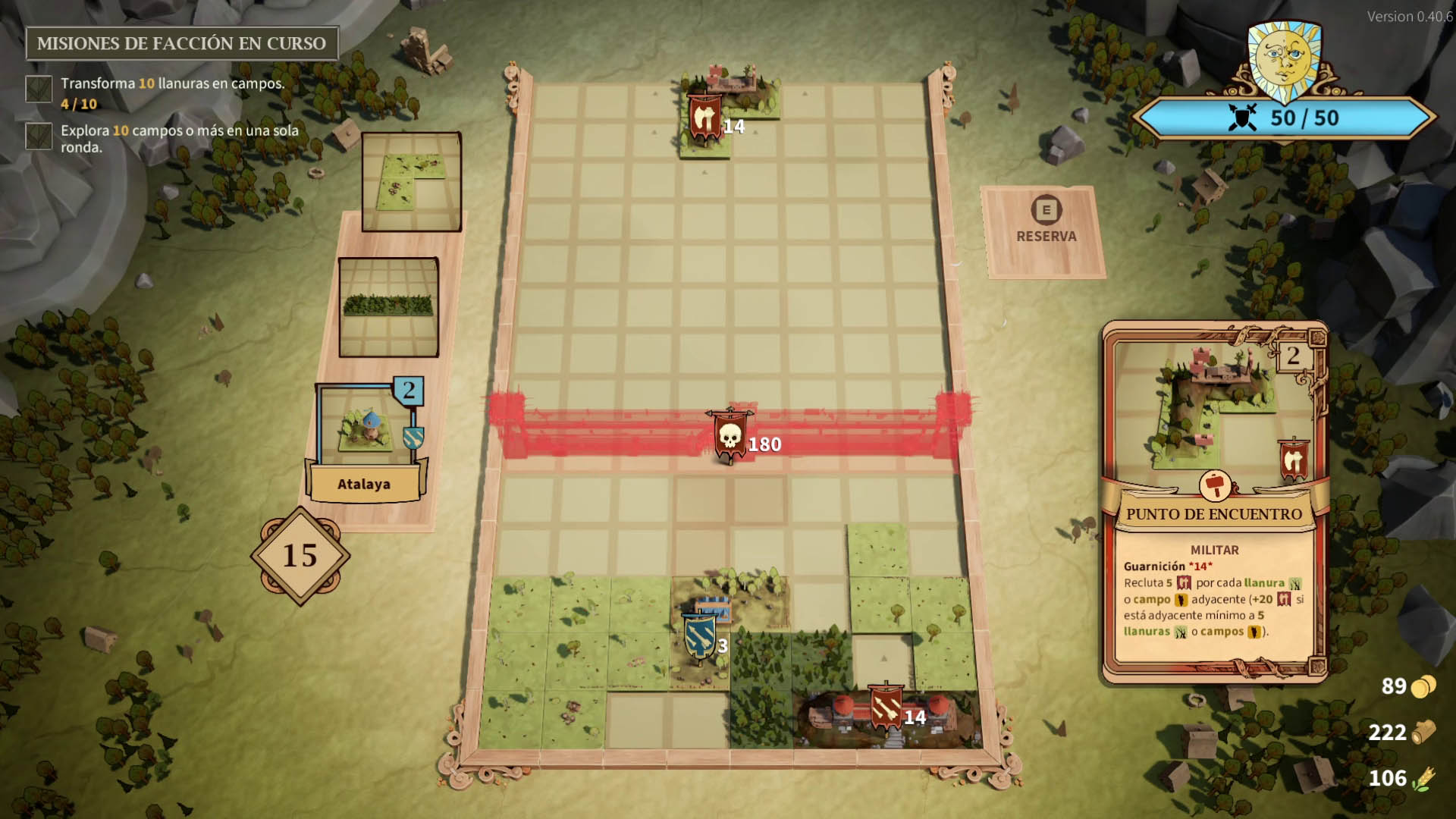
If we do it right we will have been able to generate a good amount of military power for when the phase ends and we have to face the boss. The confrontation will be the same as a normal combat, only that the number of enemy military power will be greater. If we defeat him, we will pass to the next act.

In case of death, we will have to start from the beginning and no, we will not get any advantage or permanent improvement, since the progression in this case will be through a skill tree in which we will need 'crowns', which we will get by completing missions. The missions will be of different types and we will usually complete them without realizing it, they will ask us for things like having x amount of soldiers in a battle or introducing x card in our deck. As for the advantages, they will allow us to unlock stronger military structures that will make things a little easier for us.
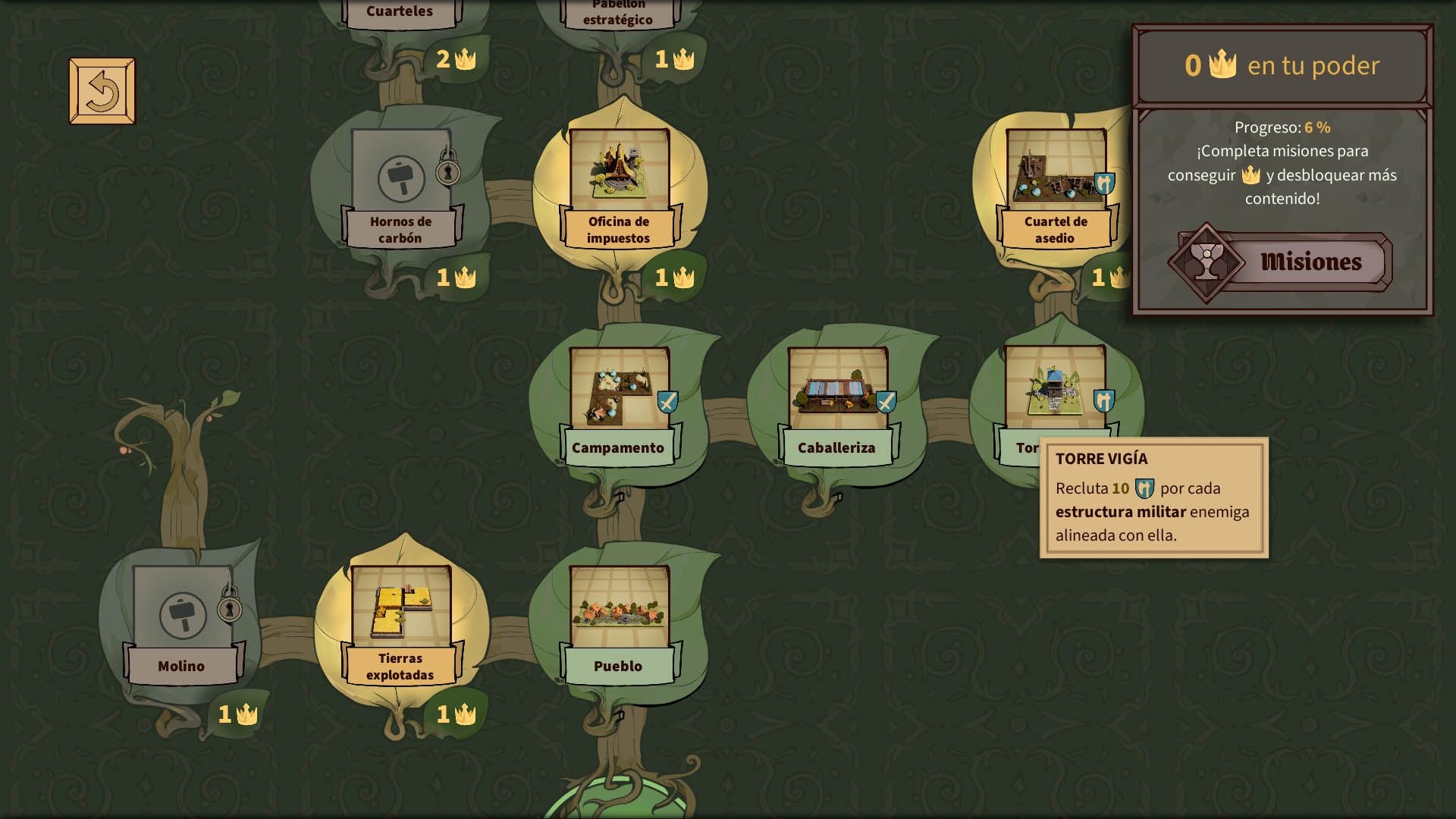
Perhaps the game may seem complex, in fact, it is, there are some mechanics that I skipped because I'm getting too long. But, once you understand how it works and if it manages to hook you with the peculiar mechanics it has, it can end up being quite satisfying, as you can make great combinations with the pieces, for example; I created a deck focused on forests and when I had a lot of forest pieces connected, all my structures started to gain military power. But well, although I liked it, I think it's not a game for everyone, if the mechanics don't click for you, you'll probably end up bored or frustrated after 20 minutes.


All images/gifs shown in this publication have been taken and created by me
-----

Me encanta cuando encuentro estos juegos que mezclan mecánicas raras porque casi siempre terminan siendo divertidos y originales. En este caso descubrí Drop Duchy, un roguelite con mecánicas de tetris, sí, de tetris.

Entonces, no tenemos historia, lo cual agradezco porque no aportaría nada a un juego como este. La mecanica del juego consiste en que, al iniciar un nivel, veremos un tablero y comenzaran a caer piezas, literalmente como el tetris que todos conocemos. La diferencia aquí es que cada una de estas piezas representará un terreno, en este caso como estoy empezando solo tengo piezas de bosque y sabanas. Siempre que completemos una línea, obtendremos cierta cantidad de recursos, los cuales podremos usar más adelante.

Además de las piezas de terreno, también habrá piezas que sean estructuras, como una granja. Estas piezas interactuarán con el terreno de distintas formas, por ejemplo, hay piezas que convertirán los bosques cercanos en campos de trigo y nos otorgarán materiales, por lo que, si queremos obtener las mejores ganancias, debemos pensar a la hora de jugar y evitar colocar piezas aleatoriamente.

El primer nivel siempre será pacifico y estará enfocado en ayudarnos a recolectar materiales. Una vez llenemos el tablero verticalmente, el nivel acabará y pasaremos a la siguiente zona. En el mapa muchas veces los caminos se bifurcarán y podremos decidir por donde ir. Tendremos zonas pacificas, zonas de vendedores donde podremos gastar nuestros recursos y zonas enemigas.

Cuando entremos en una zona enemiga las mecánicas serán las mismas, pero, además de nuestras piezas, también caerán piezas de estructuras enemigas, algo así como cuarteles enemigos. Al igual que las nuestras, estas piezas tendrán efectos, por ejemplo; Habrá una ficha enemiga que por cada sabana que tenga cerca, ganará 1 soldado. Por suerte siempre tendremos el control del tablero, por lo que, si somos inteligentes, evitaremos colocar las piezas enemigas en lugares ventajosos.

En cuanto a nuestras fichas, no solo tendremos granjas, también tendremos estructuras ofensivas que dependiendo de donde estén, ganarán más o menos poder militar. De momento solo habrá tres tipos de poder militar; Espadas, Hachas y Flechas, cada una es fuerte y débil contra otra.

Una vez llenemos el tablero verticalmente, comenzará la fase de ataque. Esto es probablemente lo más complejo de explicar. El poder estará representando con el número de unidades que tengamos. El resultado será una resta de la cantidad de enemigos a nuestra cantidad de soldados, por ejemplo, si tenemos 40 soldados de hacha y atacamos a 20 soldados de hacha enemigos, el resultado será que saldremos victoriosos con 20 soldados de hacha. Sin embargo, si con los soldados de hacha atacamos a los soldados de espada, tendremos una ventaja, por lo que podríamos perder menos soldados en el resultado final. Suena confuso, pero luego de 2 o 3 combates te adaptas. En caso de que nuestra cantidad de soldados sea menor a la cantidad de soldados enemigos, además de perder a nuestras unidades, perderemos puntos de vida. Tendremos 50 en total, al menos al principio. La cantidad de puntos perdidos dependerá de que tanta diferencia haya en los combates, lo bueno es que a no ser que los perdamos todos, podremos seguir avanzando.

Algo que no he dicho es que el juego funciona como un deckbuilder, cada pieza de estructura será una carta que podremos agregar o quitar de nuestro mazo. Estas cartas también podremos subirlas de nivel gastando recursos como trigo o madera, que obtendremos a lo largo del mapa y en los niveles pacíficos. Al subirlas de nivel ganaran ventajas como aumentar la cantidad de soldados creados.

Si no me equivoco, el juego actualmente tiene 3 actos. Pude completar el primero, pero morí en el segundo. Al final del primer acto nos enfrentaremos a un jefe, el cual tendrá una mecanica bastante original. El tablero tendrá una gran muralla en medio y, si una pieza termina sobre esa muralla, la fase acabará inmediatamente y comenzaremos a luchar. Entonces, para asegurarnos de poder colocar la mayor cantidad de piezas posibles y aumentar nuestras tropas, deberemos jugar inteligentemente. Conforme mejor juguemos, la muralla irá subiendo e iremos ganando espacio para colocar más piezas.

Si lo hacemos bien habremos podido generar una buena cantidad de poder militar para cuando acabe la fase y tengamos que enfrentarnos al jefe. El enfrentamiento será igual que un combate normal, solo que el número de poder militar enemigo será mayor. Si lo vencemos, pasaremos al siguiente acto.

En caso de morir, deberemos empezar desde el principio y no, no obtendremos ninguna ventaja o mejora permanente, ya que la progresión en este caso será a través de un árbol de habilidades en el que necesitaremos ‘coronas’, las cuales obtendremos al completar misiones. Las misiones serán de distintos tipos y normalmente las completaremos sin darnos cuenta, nos pedirán cosas como tener x cantidad de soldados en una batalla o introducir x carta en nuestro mazo. En cuanto a las ventajas, nos permitirán desbloquear estructuras militares más fuertes que nos facilitarán un poco las cosas.

Quizás el juego pueda parecer complejo, de hecho, lo es, hay algunas mecánicas que me salté porque me estoy alargando demasiado. Pero, una vez entiendes cómo funciona y si logra engancharte con la mecánica tan peculiar que tiene, puede terminar siendo bastante satisfactorio, ya que puedes hacer combinaciones geniales con las piezas, por ejemplo; Creé un mazo enfocado en los bosques y cuando tuve una gran cantidad de piezas boscosas conectadas, todas mis estructuras comenzaron a ganar poder militar. Pero bueno, aunque me gustó, creo que no es un juego para todo el mundo, si la mecánica no te hace clic, probablemente termines aburrido o frustrado a los 20 minutos.

